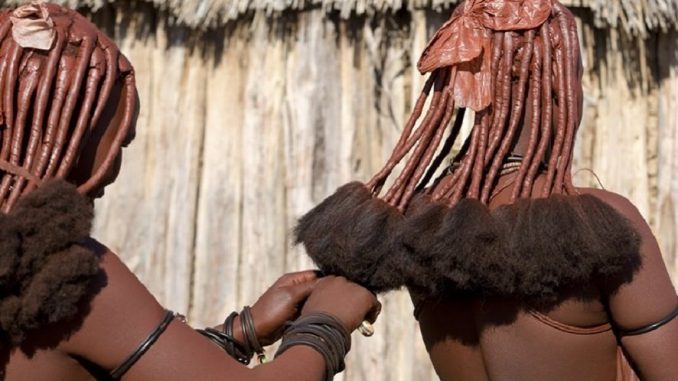
Ask any black woman about the kind of relationship she has with her hair, and she may tell you that it’s almost like a romantic affair. From spending long hours at the salon to having it washed and braided or pressed, to the amount of money spent on the hair should tell you how precious the hair is.
Right from the culture of ancient African civilisations, the hair was entrusted to close relatives for styling as it was believed that if a strand fell into the hands of an enemy, the owner of the hair could be harmed. Hair at the time played significant roles, as it symbolized one’s family background, social status, tribe, their spirituality and even marital status. Communities as early as the 15th century attributed the hair to fertility, believing that thick, long tresses and neat, clean hair symbolised ones ability to bear healthy children.
In effect, early African civilisations came with so much tradition and different hairstyles and here are some of them.
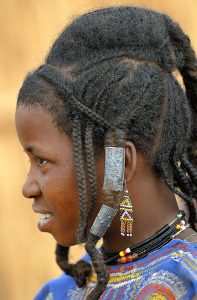
The Fula people or Fulani Tribe numbering between 20 and 25 million, are one of the largest ethnic groups in the Sahel and West Africa. It is the largest nomadic pastoral community in the world. Its women have a unique traditional hairstyle, where their long hair is put into five long braids that either hang or are looped on the sides, with a coiffure in the middle of the head. Beads and cowrie shells are used to decorate the hair. Many a time, a family’s silver coins and amber are attached to the braids not only for aesthetic purposes but most importantly as a heritage symbol. This tradition has been passed through generations to women and young girls.
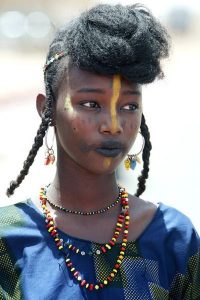
With an estimated population of 100,000, the Wodaabe Tribe are also a pastoral nomadic tribe. They are a subgroup of the Fulani Tribe and are found in the Sahel Region and West Africa. The hairstyle of the women and girls is similar to the one by Fulani women. Basically, this consist of two braids on either side of the head with a coiffure in the middle. Sometimes, the women just leave a few braids on their hair but decorate it with cowrie shells and beads as well.
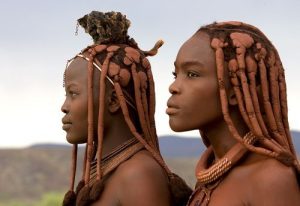
Found in the northwestern region of Namibia, the Himba Tribe style their hair according to one’s age, marital status and the stage of life they find themselves in. Their hair is often dreadlocked with a mixture of ground ochre, goat hair and butter. Indian hair extensions have in recent times been included in creating these dreadlocks. For a teenage girl, she gets braid strands or dreadlocks that hangs over her face. A young woman who is ready to marry would tie back her dreadlocks, showing her face. Married women wear an Erembe headdress made from animal skin over their head. A man who is not married would wear a single plait to indicate their status. But once they marry, the men cover their heads with turbans and never remove them, except during funerals.
The Himba are indigenous peoples with an estimated population of about 50,000 people. They are mostly semi-nomadic herders.
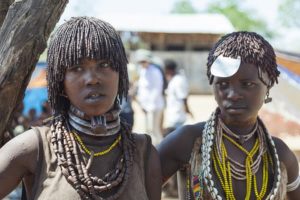
With an estimated population of 20,000, the Hamar Tribe is a pastoral community located in Ethiopia’s Omo Valley. The women mostly wear their hair in thin ochre dreadlocks created with water and a binding resin. Girls under the adolescent age style their hair in cornrows and decorate them with beads.
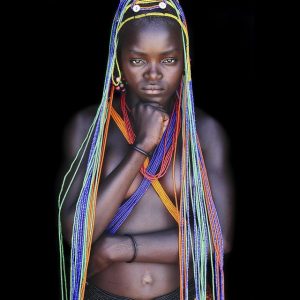
They are founded in Southern Angola and the women there are noted for their unique hairstyle.
“The women coat their hair with a red paste called, oncula, made of crushed red stone. They also put a mix of oil, crushed tree bark, dried cow dung and herbs on their hair. Their hair is decorated with beads, cauri shells (real or plastic ones) and dried food. Having their forehead shaved is considered as a sign of beauty. The plaits, which look like dreadlocks are called ‘nontombi’ and have a precise meaning. Women or girls usually have four or six ‘nontombi’ but when they only have three it means that someone died in their family,” a photographer, Eric Lafforgue of ericlafforgue.com said.
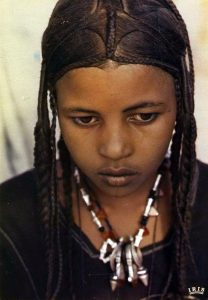
The semi-nomadic group are mainly found in the southwestern parts of Niger, Mali, Burkina Faso, Libya, and southern region of Algeria. Women and girls from this group keep their hair in beautiful braided styles close to the scalp. The women usually keep their hairstyles covered while the girls do not.
BY MILDRED EUROPA TAYLOR
Source
